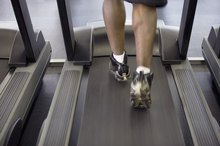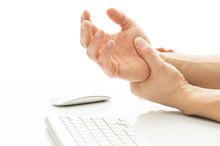Jet Lag & Muscle Cramps
Traveling by air across the country or internationally can take a toll on your body -- particularly if you cross multiple time zones. Jet lag and muscle cramps are both common nuisances after plane travel. Luckily, these symptoms are typically not serious. There are things you can do, such as maintaining hydration, exercising and soaking up some sunlight, to reduce these unpleasant symptoms.
Jet Lag
The symptoms of jet lag -- including difficulty sleeping at night, feeling sleepy during the day, confusion, irritability, tiredness and digestive issues -- typically resolve on their own within a few days. However, you may be able to decrease the severity of these symptoms. Dehydration, which can worsen symptoms of jet lag, can develop on long flights due to inadequate fluid intake or dry cabin air. After your flight, maintaining proper hydration can help get your body back on track. Your urine will be clear or pale yellow if you are consuming enough liquids. Moderate exercise during the day, particularly in the sunlight, may help you stay alert during the day and improve your sleep at night.
Muscle Cramping
How to Use Epsom Salt in a Jet Tub
Learn More
Muscle cramps may develop after a long flight, particularly after sitting in one position for a long time. These cramps may resolve once you are up and walking. Gentle stretching or massage may also decrease discomfort caused by muscle cramps. A warm bath or shower will increase blood flow to your muscles, which may help them relax.
In rare cases, a blood clot in your leg -- a deep vein thrombosis, or DVT -- can be mistaken for muscle cramps. This can be a potentially life-threatening condition. These blood clots typically develop in the lower leg after prolonged inactivity, and may also cause swelling, redness or warmth in the area. If you suspect you may have a blood clot, seek immediate medical attention. Moving around intermittently during your flight may decrease the risk of a DVT developing.
Related Articles
References
Writer Bio
Aubrey Bailey has been writing health-related articles since 2009. Her articles have appeared in ADVANCE for Physical Therapy & Rehab Medicine. She holds a Bachelor of Science in physical therapy and Bachelor of Arts in psychology from the University at Buffalo, as well as a post-professional Doctor of Physical Therapy from Utica College. Dr. Bailey is also a certified hand therapist.









